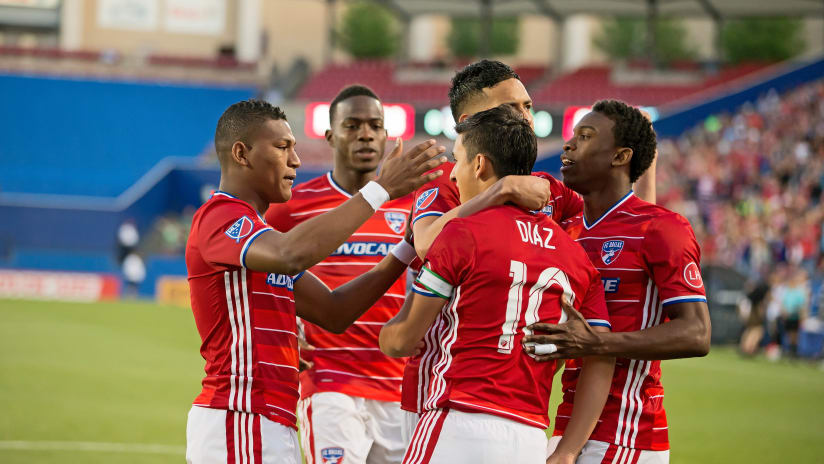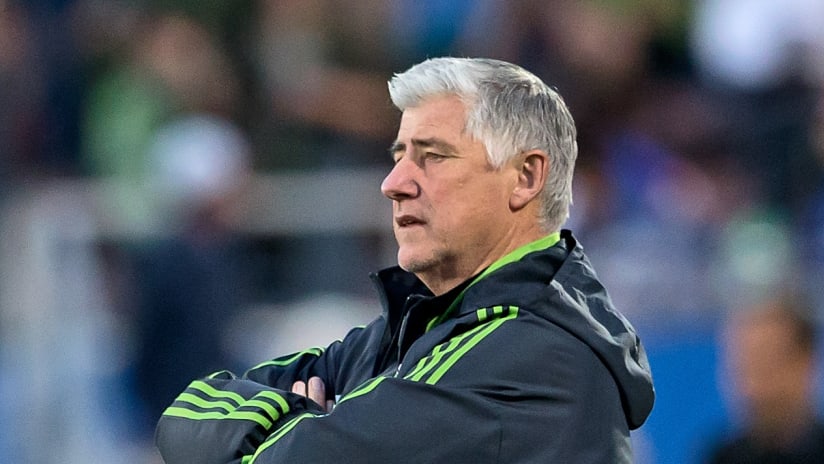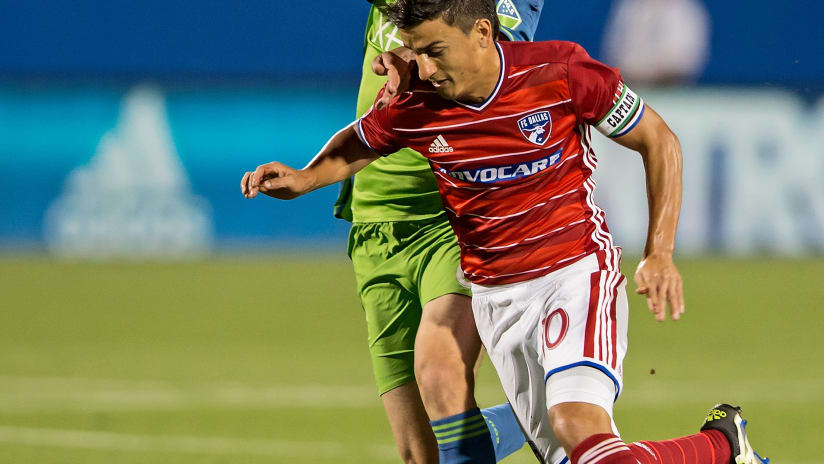A week ago, the Sounders and Lady Luck weaved one heck of a compelling dance number together. With a 1-0 lead over San Jose, Chris Wondolowski missed a penalty to draw even, and Seattle put the game away minutes later for a deserved 2-0 win.
Sometimes that luck abandons you in a hurry. So it went on Saturday night.
Just seven days after earning their fifth win in seven games, Seattle dropped all three points in a 2-0 loss to FC Dallas in Frisco. FC Dallas may have earned the win, but the game was inches from tipping in the other direction several times, notably in the first half. Seattle was whistled for a harsh penalty in the opening two minutes and nearly pulled even a half dozen times before Michael Barrios drove in the dagger late in the second half.
Soccer is a fickle game of fine margins. Seattle was dealt a painful lesson on that front in Texas. In lieu of a typical three things glance, tonight we’ll zero our gaze at one persistent issue that’s cropped up in spurts this season: attacking balance, or lack thereof.
It’s not necessarily how many shots you take, but the quality of those shots. If you routinely average a microscopic total of shots per match but have an otherworldly conversion rate, then it doesn’t much matter. What’s important is how many go in, and however you arrive at that total is purely a speculative matter for late-night debates, not necessary on-field strategy.
The problem Seattle’s been facing this year is in shot quality, not necessarily quantity. Seattle’s scored the second-fewest goals of any team in MLS so far this year, and part of the problem has been an inability to snap off shots in the box. The lack of Obafemi Martins is felt most heavily here. After a few weeks of more success going direct, those issues reared up again on Saturday.
To wit, Seattle’s central midfield interchange was jumbled and confused against FC Dallas. Here’s the average positioning map, which is so crucial for Seattle at this point in the season because the formation has been such a hot topic of conversation.
The nominal position out of the box was again a 4-3-3, but it was against San Jose too, and the team basically played a fluid 4-4-2 that was wildly successful. Not so here.
It’s hard to see much in the way of balance up the gut. The pushed fullbacks provided almost all of the width until Andreas Ivanschitz and Oalex Anderson’s introductions late on, and the central midfield trio of Cristian Roldan, Osvaldo Alonso and Erik Friberg didn’t really work as a unit. Alonso often pushed too high (more than half his passes were in the attacking half against a team playing an incredibly high line for 60 minutes), Roldan was quiet and Friberg couldn’t quite connect with a dissolving forward line once FC Dallas dropped off.
And the front line, again, proved to be an elusive beast to pin down.
Against San Jose, the attack worked so well in part because Dempsey operated behind Jordan Morris but not so deep that he was in the midfield. Morris scored four goals in four consecutive games (a streak that was snapped in Frisco) primarily because he was galloping like a wild horse down the central channel with Dempsey doing dangerous things off his back. While Morris (and Dempsey, for that matter) played overwhelmingly central again on Saturday, he did have much wide support.
The one thing you can’t see in that formation map because he’s so obscured is Herculez Gomez. The U.S. national team veteran and Morris are essentially on top of one another. That was not so good.
Gomez has been a tidy player since arriving in Seattle, and that was again the case on Saturday. Amazingly, he completed all 23 of his attempted passes, put in a pair of quality crosses and even helped out on the defensive end. He’s done a lot of the gritty work that won’t necessarily show up on highlight reels, and that’s duly earned his spot on the field.
The problem Seattle has continually run into is that Gomez is not a wide player. At all. He’s always been best as a poaching central forward, and regardless where he’s deployed, he’ll always drift inside. But Dempsey and Morris want to pull in centrally as well, which creates a distributive headache for Friberg, who had another quality match spooling in through balls to sprinting forwards. Everyone is essentially overlapping on everyone else.
In that way there wasn’t nearly enough incisiveness, and the majority of the blame for that is down to the whirlpool the front three created. The positional discipline wasn’t really there.
The 4-3-3 has worked for Seattle before this match, but with this team selection there’s essentially no width besides the fullbacks. It’s tough to stay balanced when you can’t keep the fullbacks honest, and that didn’t happen enough on Saturday night. Whenever Ivanschitz is ready to start again, he’ll be welcomed back into the XI with open arms.
The good news? Seattle was still very much in this match for more than 80 minutes, and there were good chances to score in the first half. The problem, as it’s been for most of the year, was in finishing them off. Morris and Dempsey each had a shot on target, neither of which made FC Dallas keeper Chris Seitz too worried. Left back Joevin Jones had another. And that was it. For all Seattle’s danger, Seitz didn’t have much to do in the end.
FC Dallas’ attack feasted as it always does, devouring goals on sheer opportunism. Their first was off a penalty and another off a quick-fire attack that lasted all of 10 seconds. Seattle owned the pace of play but couldn’t quite cash in on it.





